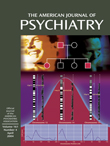This is a little book, only 170 pages of text, with an ambitious title. The reader with an expectation that this “scientific study” will be based on well-controlled laboratory investigations of dreams will be disappointed. The subtitle is the more accurate representation of the content. Dr. Domhoff has put together evidence from three areas of work—the neuroanatomy of dreaming, based on recent brain imaging studies in sleep; the neuropsychological mapping of dreaming from studies of individuals with known areas of brain damage and the development of dreaming in children; and his own work on the content analysis of dream reports—to support a neurocognitive model of dreams.
The data from these three approaches to dreaming do not fit together well enough to make a coherent theory. The brain imaging work identifies the differences between brain states, with the implication that their mental correlates will differ. The neuropsychological correlation between areas of brain damage and dream content losses relates the site of damage to specific changes in dream content. The dreams of young children show that the cognitive characteristics of dreams develop over time in parallel with the waking cognitive maturation of children, putting the emphasis on the similarity of the structure of these two. The content analysis of dreams, based on the Hall/Van de Castle system, supports the continuity of the concerns in waking and dreaming mental life. The pieces are there, but they are not organized into a theory.
The heart of the book is how to carry out a detailed content analysis of dreams reported in home dream diaries by subjects who are motivated to record these for their own interest. The subjects represent a sample of convenience rather than a systematic or representative sample. The advantages are that these diaries are often kept over long periods of time and that many have been posted on the Internet at DreamBank.net, which has a search engine for their analysis. The categories that make up the Hall/Van de Castle system allow for the computation of the frequency of different characters, types of social interaction, activities, emotions, physical surroundings, good fortunes, and misfortunes as well as standard ratios of male to female percent, aggression to friendliness percent, and other information to be derived. The author then illustrates how he applies these to test for consistency within subjects over time and to relate these dream profiles to the dreamer’s areas of waking concern. He summarizes his findings as showing that “dreams dramatize ongoing emotional preoccupations.” The problem of the validity of the inferences drawn from these analyses—the old question of “Who is right about the meaning of a dream, the analyst or the dreamer?”—is left unanswered.
The book winds up with a critique of the major theories of the meaning of dreams: Freud’s wish fulfillment, Jung’s compensation function and dream construction, Hobson-McCarley’s activation-synthesis, and the revised Hobson AIM (activation, input source, modulation) model, as well as some of the sleep-laboratory-based conceptions of dream function, such as the contribution to emotional problem solving. The author dismisses them all and ends on the rather pessimistic note that dreams probably have no function but are more coherent and meaningful than has been credited by the neurophysiologists. He states that dreams are a reasonable simulation of the waking world of the dreamer using the same schemata, but, since they are less constrained by reality, they are useful to scientists and the dreamers themselves in understanding the dreamer. As a theory the book is premature, but the author has given us good tools to apply to questions about dreaming and the personal schemata they reveal.

